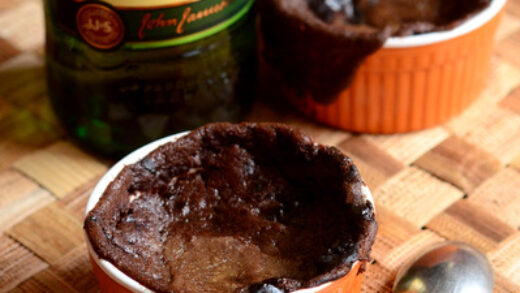Wood pellet smoking offers a convenient and efficient way to infuse rich, smoky flavors into various meats and dishes. However, like any cooking method, smoking with wood pellets can present its own set of challenges and issues.
In this troubleshooting guide, we’ll break down a few of the common problems that arise when using wood pellets for smoking and provide practical solutions to ensure a seamless and enjoyable smoking experience.
Mastering the art of wood pellet smoking requires a keen understanding of potential hurdles and the know-how to troubleshoot them effectively. By identifying and addressing these common issues head-on, you can elevate your smoking skills and create mouthwatering, savory dishes that leave a lasting impression.
Understanding the Use of Wood Pellets
For many outdoor cookers, wood pellets are an essential element in the art of smoking meat. To truly master the craft of smoked barbecue on a pellet smoker, it’s vital to understand the specific characteristics and nuances of wood pellets.
How Are Wood Pellets Made?
Wood pellets are made from compressed sawdust and wood shavings, typically sourced from 100% hardwood to ensure that they are food-grade. During production, the raw materials are condensed into small, dense pellets without the use of additives or binding agents. This process ensures that the pellets burn cleanly and uniformly, generating consistent smoke for the cooking process.
Types of Wood Pellets
There is a wide variety of wood pellets available, each offering distinct flavors and aromas to enhance the smoked food. Hardwood pellets like hickory, oak, and mesquite impart robust and bold flavors, ideal for beef and pork. On the other hand, fruitwood pellets such as apple, cherry, and pecan produce milder, sweeter smoke, perfect for poultry and fish. Additionally, blended pellets combine different wood types to create unique flavor profiles, providing versatility for various recipes.
Influence on Flavor
The type of wood pellet used significantly impacts the flavor profile of the smoked food. Different wood species impart unique characteristics, ranging from smoky and earthy to sweet and fruity notes. Understanding how each type of wood pellet influences the flavor will enable you to tailor the smoking process to achieve the desired taste.
By comprehending the composition, types, and flavor influence of wood pellets for smoking, you’ll be equipped to make informed decisions when selecting the most suitable pellets for your smoking endeavors.

Common Issues When Using Wood Pellets for Smoking
When using wood pellets for smoking, encountering common issues can disrupt the cooking process and affect the quality of the food. Understanding these issues and their solutions is crucial for achieving the desired results. Here are three of the ones encountered most frequently:
Inconsistent Temperature
Fluctuating temperatures can hamper the smoking process, leading to unevenly cooked food. Inconsistent cooking temperatures often occur due to poor air circulation, improper pellet combustion, or external factors such as weather conditions (especially cold weather). These fluctuations can impact the flavor and texture of the food, making it essential to address the root cause and maintain a stable smoking environment.
Excessive Ash Buildup
An excess buildup of ash in the smoker can impede airflow, leading to inefficient combustion of wood pellets. This buildup not only affects the temperature regulation but also impacts the flavor of the food being smoked. It is crucial to understand the factors contributing to ash buildup, such as the type of smoker used and the quality of wood pellets, to effectively mitigate this issue.
Poor Smoke Production
Inadequate smoke production can result in underwhelming flavors and aromas in the smoked food. Factors such as moisture content in the wood pellets, airflow within the smoker, and combustion efficiency can impact smoke production. Addressing these factors and optimizing the smoking environment can help enhance the overall smoking experience and ensure the desired flavor infusion in the food.
By identifying and addressing these common issues when using wood pellets for smoking, you can elevate your smoking techniques and achieve consistent, high-quality results.

Solutions for Issues When Smoking With Pellets
When using wood pellets for smoking, encountering issues is not uncommon. However, understanding how to troubleshoot these problems is key to ensuring a successful smoking experience. Here are some solutions to address the common issues we covered above:
Calibrating the Smoker
As mentioned above, maintaining a consistent temperature is crucial for achieving the desired results when smoking with wood pellets. Calibrating your smoker ensures that the temperature remains steady throughout the smoking process.
To do this, start by thoroughly cleaning the smoker and ensuring that all vents are clear of any obstruction. Then, light the smoker and allow it to run at the desired temperature for approximately 30 minutes. Use a reliable digital thermometer to monitor the internal temperature of the smoker and make necessary adjustments to the controls as needed to achieve and maintain the desired heat level.
Following this calibration process will allow you to find out exactly how many wood pellets to use and the precise settings for the controls to ensure that you can maintain consistent temperatures once your food is on the grill.
Managing Ash Buildup
As you use your smoker, ash buildup can disrupt the airflow and affect the performance of the unit. To manage ash buildup effectively, it is essential to use high-quality wood pellets that leave behind minimal residue.
Additionally, regular cleaning of any residual ash from the smoker’s fire pot and ash pot is crucial in preventing any blockages that may impede the efficiency of the smoker. By ensuring that the smoker is free from excessive ash buildup, you can optimize its performance and prolong its lifespan.

Enhancing Smoke Production
To enhance smoke production when using wood pellets for smoking, consider employing techniques to maximize the generation of flavorful smoke. One effective technique is to position the wood pellets closer to the heat source, allowing for more efficient combustion and smoke generation.
Additionally, periodically inspecting and cleaning the smoker’s components, such as the auger and venting system, can help maintain optimal airflow and improve smoke production.
Keep in mind that one barbecue-cooking myth you may come across is that adding moisture to wood pellets helps them produce smoke. DO NOT do this! Doing so will quickly disintegrate the pellets as they are not made to get wet at all.
By implementing these troubleshooting solutions and optimizing the performance of your pellet smoker, you can elevate the quality of your smoked dishes and enjoy an enhanced smoking experience.
You Can Master the Art of Smoking With Wood Pellets
By understanding the common issues when using wood pellets for smoking and their solutions, you can now approach your smoking sessions with more confidence and the ability to overcome any obstacles that come your way.
Troubleshooting common issues when using wood pellets for smoking is crucial for maintaining consistency and achieving desired results. By proactively addressing these issues, you can ensure that your smoking sessions are free from unexpected disruptions, allowing you to focus on the art and enjoyment of creating delicious smoked dishes.
Embrace these strategies, adapt them to your specific needs, and enjoy the delightful aromas and flavors that wood pellet smoking can bring to your culinary creations.
Make sure to also check out our article on 12 pellet grill tips and tricks to get even more info that will help you maximize the success of your pellet smoking.
Did you recently have success with any of the solutions we covered above? Know of any other common issues with pellet smoking that you want to add? If so, leave a comment below!
Want to get more insider information like this, as well as proven step-by-step barbecuing techniques and secrets? If so, join our Champion Pitmasters and Grillmasters here in the one-of-a-kind BBQ Champs Academy online BBQ cooking classes. Our easy-to-follow classes are packed with everything you need to know to start barbecuing like the pros. For the full inside look, check out the All-Access pass now!
#Common #Issues #Wood #Pellets




